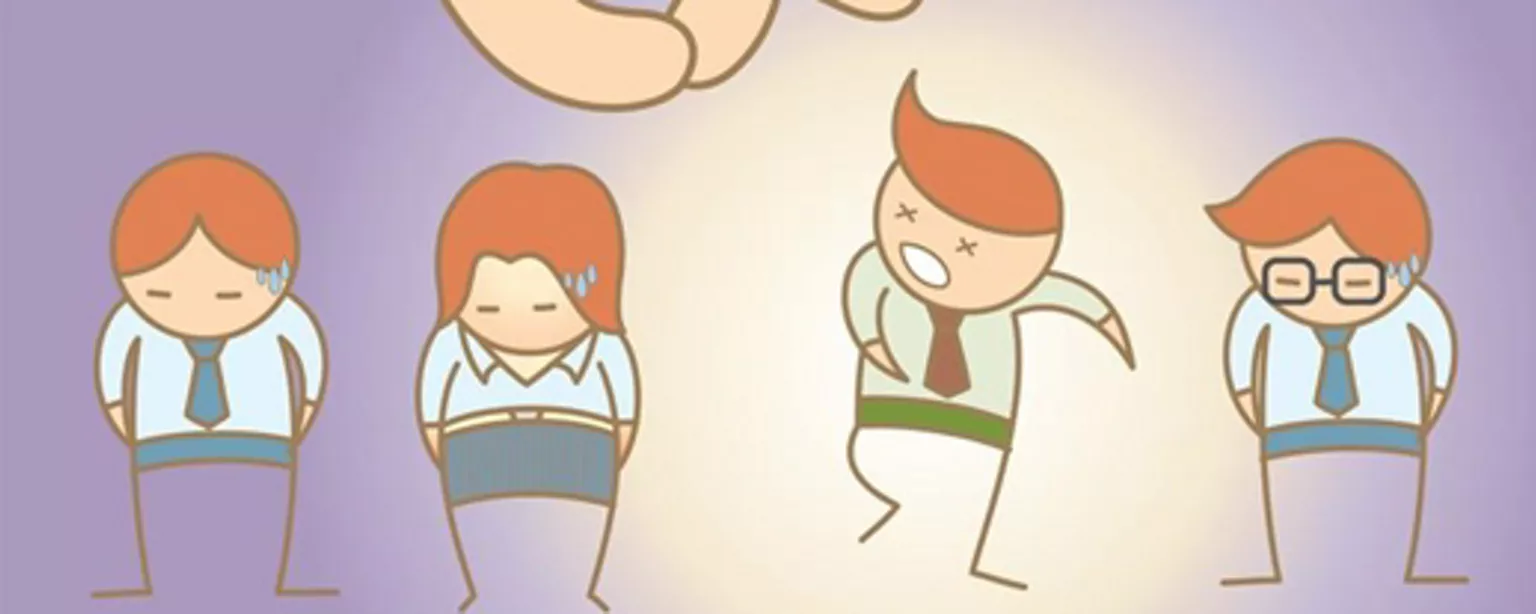Even the best creative professionals can be faced with a layoff. I recently learned this firsthand. Here are 10 steps to help you take control of an out-of-control situation and get your career back on track.
After 14 years working for HOW magazine (the last two as editor), I decided it was time to try something new. I quickly landed a job on the very small editorial team of a very small company creating content for a health and fitness website. The job allowed me to marry my personal passion for exercise and wellness with my professional life as a writer and editor.
Three days after my first anniversary with the company, I was laid off along with about a dozen colleagues. After working continuously for more than 18 years, I suddenly found myself unemployed, and with nowhere to be the next day. Yes, there was crying (a lot of crying). Then there was figuring out how to box up all the junk that had accumulated in my cubicle and get it to my car in the pouring rain. Then there was calling my husband to ask him not to leave for work until I got home because I very much needed a hug.
As I drove home, I realized that the next few hours and days would set the tone for the duration of my unemployment, however long it lasted. I could either wallow in sadness and anger or I could get busy plotting the next phase of my career. I decided, as I turned the corner onto my street, that I would give myself exactly an hour to mourn a job I loved and then get to work.
It's been nine weeks since the layoff and I still don't have a full-time position, but I haven't just been sitting around waiting for a weekly unemployment check. I've managed to make more money freelancing and doing temporary work than I did in my previous job. I finally got around to creating an online portfolio and I've had several promising job interviews.
As a creative, whether you're a writer (like me) or a graphic designer or a developer, you're in a unique position to take advantage of a layoff or, at the very least, make the best of it. To keep myself from focusing on the negative, the first thing I did was make a list of concrete tasks I could start on right away. As I completed each one, I added more until I found I was quite busy and didn't have time to worry.
So, if you ever get called into your manager's office for an unplanned meeting, don't panic. Here's your post-layoff to-do list:
1. Set a timer
Of course you're going to be shocked, sad and angry. Those are normal human emotions. But if you don't find a way to limit the amount of time you allow yourself to grieve, you can easily get pulled into a downward spiral. You can actually set a timer or you could just make a deal with yourself to start the next day with a fresh outlook. Dwelling does nothing.
2. Dust off your resume
I was lucky because it had only been a year since I updated my resume. If it's been several years since you created a fresh one, take time to research current resume trends to make sure yours stands out. Tailor it to each position you pursue. And don't forget to write a customized cover letter as well. Even in the era of LinkedIn and portfolio sites, telling a potential employer exactly why you're the right candidate is still critical.
3. Post your resume everywhere
Beyond the usual suspects (CareerBuilder, Monster, LinkedIn, Indeed), research local job boards and organizations that post openings. Even if you can't post your resume on some of these sites, they provide another place to search for positions. In my area, I'm following job boards dedicated to PR professionals, tech professionals and arts organizations.
4. Refresh your online portfolio
If, like me, you don't have a portfolio that's easy for potential employers to access, creating one should be a top priority. There's no need to build a custom site from scratch (unless you're a web designer or developer). Go with something quick and easy like Behance or Carbonmade. I used Contently, which is specifically designed for journalists and other writers.
5. Update your LinkedIn profile
In addition to updating your profile with all the details you're adding to your resume, take some time to connect with former colleagues. If any of your contacts are also seeking jobs, they'll be in a great position to recommend you to hiring managers. Be sure to return the favor. (Of course, this works better if you're not all looking for the same kind of role.)
6. Say it on social media
Not everyone is comfortable talking about something as personal as losing a job. But the very first thing I did when I finished blowing my nose and drying my eyes was post a message on Facebook telling my friends what had happened and asking them to send me any opportunities they came across. This turned out to my best networking and income-generating tool (see #9).
7. Apply for unemployment
OK, this part is no fun, but you've been working hard for years and you deserve this small cushion to help you get by until you find a new job. The amount of unemployment compensation varies by state but is typically about 50 percent of your previous weekly income. Luckily, a friend had recently gone through the unemployment process and warned me I'd be met with messages that might make me feel like a criminal who was trying to defraud the government. Don't let these notices intimidate you or make you feel bad about yourself. If you get stuck or frustrated, connect with a real person on the phone. You might have to hold for a long time, but it's worth it. In my experience, the unemployment office employees know it's a confusing and scary process and are happy to answer your questions.
8. Structure your day
Develop a daily routine so you don't slip into negative thinking patterns. I like to get up early and take my computer to my favorite cafe to get caffeinated and read email. I also attend three to five fitness classes per week and increased my volunteer hours with the SPCA, an organization I've been working with for many years. As you're out and about, don't hesitate to let people you meet know that you're looking for work. In my case, a chance encounter with an acquaintance led to an interview.
9. Start freelancing
I told colleagues, friends and former employers that I was available for freelance assignments and landed a huge one right off the bat. In fact, I've been able to generate so much freelance work that I've only had to collect unemployment for one week so far. If your foray into serious freelancing goes well, you might even decide to stick with it and start your own business. Just be sure to talk with an accounting professional so you can properly plan for taxes.
10. Register with a specialized staffing agency
Many staffing agencies offer temp-to-perm assignments that can give you a chance to try out a company before you commit. Some large ad agencies maintain their own freelance databases as well. Last week I got a call from a company that was looking for an on-site quality assurance consultant. That particular job didn't pay as much as I can make writing, so I politely declined. But they agreed to keep me in mind for future assignments that better match my level of experience.
As corny as it sounds, I've managed to turn a really difficult situation into a learning and career-building experience. In fact, I just got an email from a company I've been wanting to work with for several years, but didn't have the right kind of experience until now. On Monday, I'll be starting a 60-day assignment that could turn into a full-time job and I can't wait!
On that rainy morning, when I learned I no longer had a job, I couldn't imagine that two months later I'd feel more in control of my life and career than I ever had before.
Megan Lane Patrick is the former editor of HOW magazine and has been writing about design and creativity for more than 15 years.






